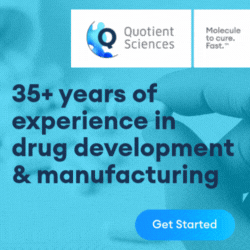Closing the Access Gap in Pediatric Oncology & Why Neuroblastoma Families Are Still Struggling
By: Emilee Kudla
When Innovation Outpaces Access: The Crisis in Pediatric Cancer Treatment
In the fight against pediatric cancer, scientific breakthroughs continue to raise hope. Yet for many families, these innovations are heartbreakingly out of reach. In 2023, James Bitzer, a 3-year-old boy from the US, was diagnosed with stage IV neuroblastoma, a highly aggressive and life-threatening childhood cancer. Two years, multiple relapses, and several grueling treatments later, James’s family is still battling not only the disease, but the structural and financial barriers that surround access to advanced therapies.
James’s journey is not unique. Thousands of families navigating high-risk pediatric cancers are forced to rely on crowdfunding platforms like GoFundMe to pursue care that should be standard, not extraordinary. Their stories reveal an urgent truth: without systemic change, medical innovation will continue to outpace the infrastructure designed to deliver it.
The Cost of Hope: One Family’s Struggle With Neuroblastoma
At just 5 years old, James has endured an unimaginable medical odyssey, chemotherapy, surgery, radiation, an anti-GD2 vaccine trial, and immunotherapy. Now facing a second relapse, his family is urgently seeking access to novel treatment options, including advanced immunotherapies and clinical trials. But because many of these options are experimental or out-of-network, insurance won’t cover them.
Weekly costs can exceed $1,000 for essential diagnostics alone, like stool sampling for microbiome analysis, a potential marker of treatment response. It’s an all-too-common scenario: promising science exists, but it’s locked behind a paywall of travel, housing, and procedural fees.

James with his dad Jason
“I will go broke to save my son,” says James’s father, Jason Bitzer. “But I have to keep a roof over my family’s heads, too.”
What is Neuroblastoma?
Neuroblastoma is a rare pediatric solid tumor that arises from immature nerve cells. It accounts for roughly 15% of childhood cancer deaths, despite being only 6%-10% of diagnoses. Nearly half of children are diagnosed with high-risk neuroblastoma, often involving MYCN amplification, stage 4 disease, or unfavorable tumor biology.
Standard Treatments Include:
- Induction chemotherapy
- Surgical tumor resection
- High-dose chemo with stem cell rescue
- Radiation
- Anti-GD2 immunotherapy (e.g., dinutuximab)
- Maintenance with isotretinoin and DFMO
The Challenge at Relapse:
Once the disease recurs, survival rates plummet. Only ~15% of patients with a second relapse survive. Access to clinical trials becomes vital, but geography, insurance restrictions, and cost can limit options.
The Innovation/Access Divide: CAR-T, GD2, and Trial Limitations
Emerging therapies targeting GD2, a marker highly expressed in neuroblastoma, offer tremendous promise. FDA-approved monoclonal antibodies like dinutuximab and naxitamab have improved outcomes for some patients, and newer options, including GD2 CAR-T therapies and bispecific antibodies, are entering clinical trials.
However, most of these cutting-edge treatments are only available at top-tier academic centers like MSK, CHOP, or Stanford. Trials have tight eligibility windows, long waitlists, and location-based enrollment that leaves rural and underinsured families behind.
Even motivated families face a daunting gauntlet: coordinating trial criteria, relocating for weeks or months, and navigating insurance gaps. For the Bitzers, every day of delay reduces James’s chance of qualifying for new options.
Pediatric Cancer and the Economics of Survival
Across the US, families in similar situations face staggering financial burdens:
- $800,000+ estimated cost of first-line treatment
- $30K–$100K out-of-pocket expenses in year one alone
- $250K+ for relapse care or clinical trial access
In cities where top trials are held, like New York and Philadelphia, temporary relocation is not just logistically hard, it’s financially impossible for many. International families often must raise hundreds of thousands of dollars to access US-based CAR-T or GD2 therapies.
And in low- and middle-income countries, even baseline care remains inaccessible for most children.
Philanthropy As a Lifeline; And a Warning
Charitable campaigns are now the de facto access point for many pediatric cancer families. GoFundMe accounts for treatment-related costs have become ubiquitous, not for alternative medicine or fringe therapies, but for legitimate, science-backed clinical options.
In James’s case, community donations may be the only way to enroll in a new trial exploring how gut microbiota may influence immunotherapy effectiveness.
This model is unsustainable. Families should not have to go viral to survive. We need systemic investment from both the government and the biopharmaceutical industry.
Biopharma’s Role in Expanding Access: From Compassion to Strategy
The pharma industry has made meaningful progress in pediatric oncology. GD2-directed agents, ALK inhibitors, and CAR-T innovations are shaping a brighter future. But the infrastructure to deliver these therapies equitably hasn’t kept pace.
What Pharma Can Do:
- Expand trial access programs and fund travel/lodging subsidies
- Collaborate with nonprofit groups to broaden trial eligibility and geographic reach
- Invest in shared manufacturing to reduce costs for small patient populations
- Support adaptive trials and real-world data collection to lower eligibility barriers
Efforts like Band of Parents, a nonprofit that directly funded early-stage antibody research at MSK, have already shown that family–industry partnerships can drive clinical breakthroughs. Now it’s time to scale that model.
A Strategic Imperative for the Future of Oncology
Neuroblastoma is not only one of the deadliest pediatric cancers, but it’s also a proving ground for the next generation of immunotherapies. The insights gained from treating these children can accelerate progress across oncology, from gliomas to adult sarcomas.
But only if access is addressed.
Let James Bitzer’s story be more than a testament to resilience. Let it be the catalyst for collaboration—between families, pharma, policymakers, and investors—toward a system where innovation meets inclusion, and where no child’s survival hinges on their family’s fundraising reach.
Learn More & Support
Donate to James Bitzer’s GoFundMe: https://www.gofundme.com/f/james-fight-a-familys-race-to-save-their-son
Total Page Views: 5224









